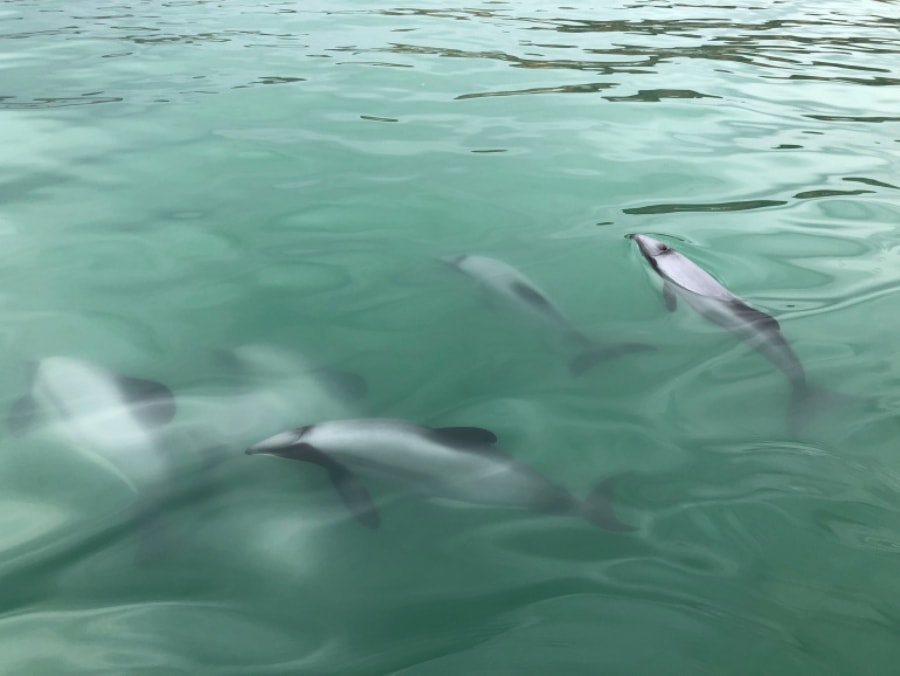MĀUI63 Drone Created Specifically to Help Save Endangered Dolphins from Extinction
BY Zacc Dukowitz
28 April 2021There are currently only 63 Māui dolphins left in existence. These dolphins live off the west coast of New Zealand, and are in severe danger of going extinct.
But a drone could help save them.
The drone in question is being developed specifically to find and track these dolphins using visual drone data and A.I. technology.
The MĀUI63 Project
Leading up the project to create this special drone just for dolphin-monitoring is a nonprofit called MĀUI63.
But the effort involves several other stakeholders, including technology experts and scientists, the World Wildlife Fund-New Zealand, the New Zealand Government, and two of the largest fishing companies in the country.
In addition to finding and tracking Māui dolphins, the drone they’re developing will be used to gather information about how the dolphins behave, their habitat, and the changing size of their population.
Scientists hope to use this data to conduct risk modelling for the dolphins and to shape policy in New Zealand that could help protect them.


Image credit: MAUI63
The project to create the drone has been underway for a few years now, with the first tests of the MĀUI63 drone starting back in 2019. Even at that early stage, the drone was able to use A.I. to tell the difference between Māui dolphins and other marine life with an impressive accuracy of 90%.
[Related read: Drones for Good—25 Inspiring Examples of Drones Doing Good around the World]
The drone uses a 50x optical zoom camera to find, follow, and film dolphins, typically flying at an altitude of about 390 feet in the air. It can stay in the air for up to six hours, allowing it to capture a lot of footage in each mission for analysis via A.I. Researchers are now starting to exit the testing phase, and beginning to use the drone to study the behavior of the Māui dolphins.
Here’s a brief timeline of the MĀUI63 project’s progress over the last few years:
- December, 2019. Using a prototype of the drone, the first detection of Māui was conducted using A.I. to analyze aerial footage.
- July, 2019. A.I. was integrated with the drone to allow it to find, track, and follow marine mammals.
- September, 2020. A new UAV was purchased by the research team to step up prototyping efforts.
- January, 2021. The team began using the drone to collect data about the Māui, committing to the development and implementation of a continuous monitoring and data sharing plan.
Now that the drone is actually being used in the field, the next step will be to develop the ability to uniquely identify each individual Māui by its fin using aerial data.
In the future, the researchers involved in the MĀUI63 project want to use the technology they’re developing to track and protect other marine life.
Drone Project Spurred by Lack of Resources
The Māui population was decimated in the 1970s by fishing companies using a new kind of net in their habitat, accidentally catching—and killing—scores of dolphins. A decade later, environmental activists realized that the Māui were in rapid decline and took steps to protect them, but by then there were only a few hundred left.
Since then, researchers like Constantine have used planes as well as boats to track the Māui. But these methods were expensive, inexact, and only brought in data every so often, which meant there could be months without any new information collected regarding the status of the declining dolphin population.


Photo credit: Rochelle Constantine/Department of Conservation, University of Auckland
In 2018, the University of Auckland sold the plane Constantine had been using in her research, and she realized she would have to find another way to keep tabs on the dolphins she studied.
The switch from manned aircraft to drones ended up having several potential benefits for her research.
They were much less expensive to fly than the airplane, which meant they could be flown more often. Also, the visual data drones collected did not require review from an expert in order to identify dolphins in the water. In fact, it could be analyzed using A.I. technology, removing the human element altogether.
Not only that, but the data collected by drone was more extensive, and probably more accurate, than the data that could be collected by the naked eye.
In the past, we had highly trained observers in a plane who would go out about once a year and report on what they saw. You had to rely on their expertise and timing. There was otherwise no visual record if sightings were questioned.
– Rochelle Constantine, Marine Scientist at the University of Auckland
After realizing that drones were the solution for her research need, Constantine teamed up with a local drone enthusiast named Willy Wang and a technology expert named Tane van der Boon, and the three founded MĀUI63.
In addition to providing a more nuanced view of the behavior of the dolphins, drone data has the potential to help protect them from dangerous parasites.
The parasite toxoplasmosis can be deadly to dolphins. By observing where migrating patterns overlap with instances of toxoplasmosis has been found in runoff water, researchers might be able to find ways to reduce the exposure dolphins face to the parasite.
But this is just one example of how the MĀUI63 drone might be used to protect marine wildlife. As researchers continue to use it, there are sure to be many other specific use cases that arrive to help protect vulnerable species.
Know of other ways drones are being used to protect endangered species? Share what you know in this thread on the UAV Coach community forum.


